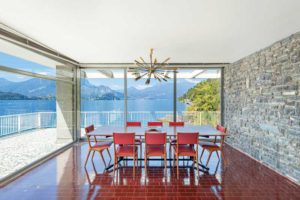Insulating glass: Compensating for internal pressure changes
Today’s windows and glazed areas almost universally employ insulating glass units (IGUs) to improve thermal performance with double or triple panes of glass. The panes usually are annealed, heat strengthened, tempered, or laminated, and tinted or with low-E coatings. The space between the panes is filled with desiccated air or with an inert gas.
These are not rigid assemblies. The glass panes on either side of the central cavity can bow in or out as ambient air pressure increases or decreases compared to the pressure of the internal gas. The change can be temporary as elevation varies during shipment or as weather (temperature and barometric pressure) fluctuates after installation. It also can be permanent due to the elevation of the installation site versus the manufacturing location. Over time, the resulting glass deflection can cause failure of edge seals and spacers and, in extreme cases, glass breakage.
This can be prevented through careful design specifications which anticipate jobsite conditions, and by using special devices to equalize internal and external pressure. The following guidelines and additional information are available in the newly published Fenestration and Glazing Industry Alliance (FGIA) manual, IGMA TM-3200-21, Design Considerations for IGU Cavity Pressure Compensation.
Site-specific design
Basic physical laws govern the interrelationship among gas pressure, volume, and temperature. The ideal gas law equation to calculate the change in gas pressure between two sets of conditions, based on deflection of glass lites, is expressed as:
P1V1/T1 = P2V2/T2
where:
T is absolute temperature.
V is absolute volume.
1 is the location where the IGU was manufactured.
2 is the travel conditions and final construction location where the IGU is installed.

In general, as the IGU temperature increases, the volume of gas inside the IGU tends to increase relative to its original volume, causing increased interior pressure and outward deflection of the glass panes. This also occurs if the elevation is higher with attendant lower air pressure at the construction site than at the manufacturing site, or when the barometric pressure at the final location where the IGU is installed drops below average during weather events.
Conversely, if the temperature decreases or, if the elevation is lower than the manufacturing location, the volume of gas inside the IGU decreases. This causes inward deflection of the glass panes. IGUs experiencing such pressure-induced deflection can fail from glass breakage or pressure overloading of the edge seal. Those with operable sash may experience frame deflection which will compromise proper operation.
In addition, during the IGU’s transportation from its fabrication site to its final installation site, it may undergo multiple elevation changes. For instance, a shipment from a midwestern U.S. state to the Canadian West Coast will travel through the Rocky Mountains. Along the journey, it will experience multiple elevations and, concurrently, short-term relative pressure changes between the IGU and ambient air. Such elevation change creates a pressure differential between the IGU glazing space and the exterior environment which, unless alleviated, can cause the noted failures.








